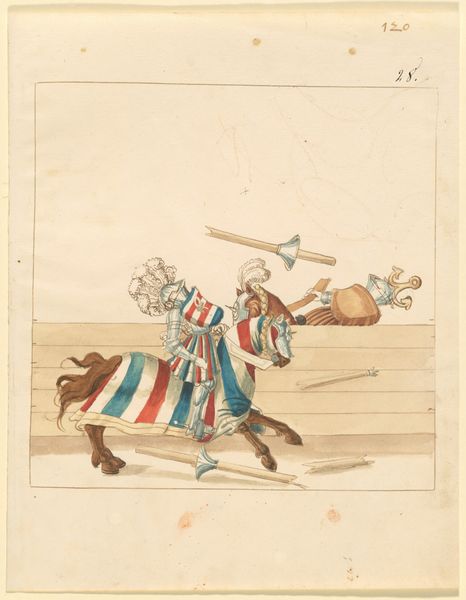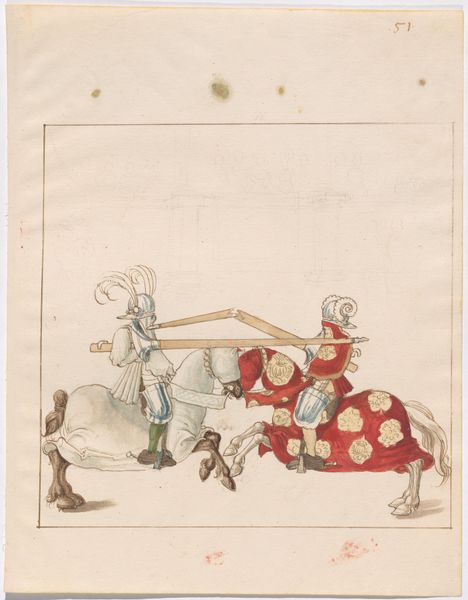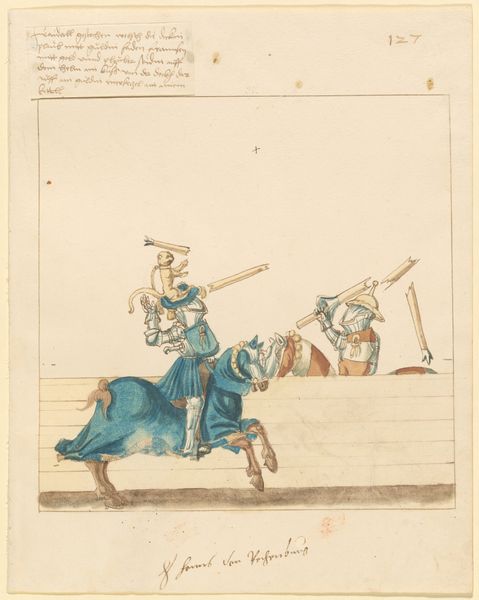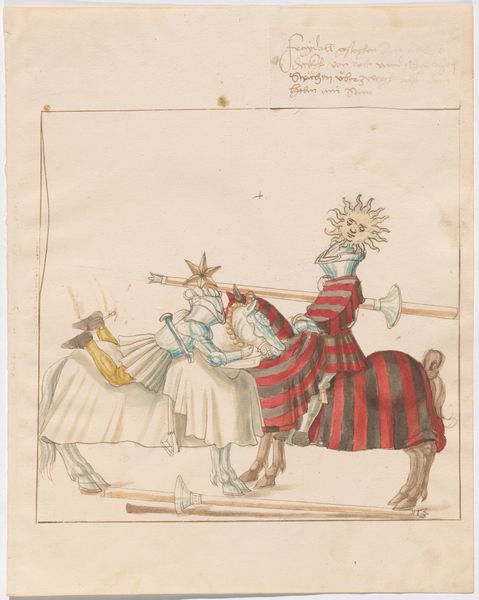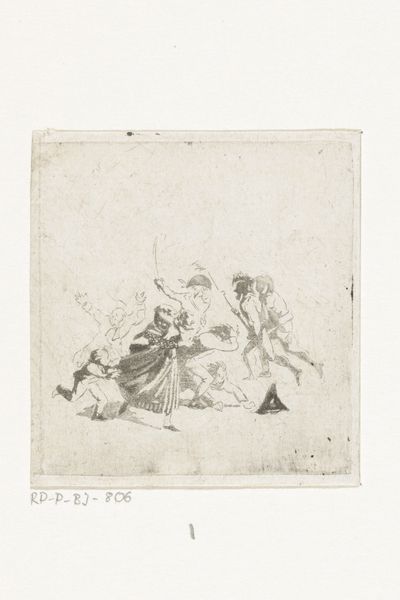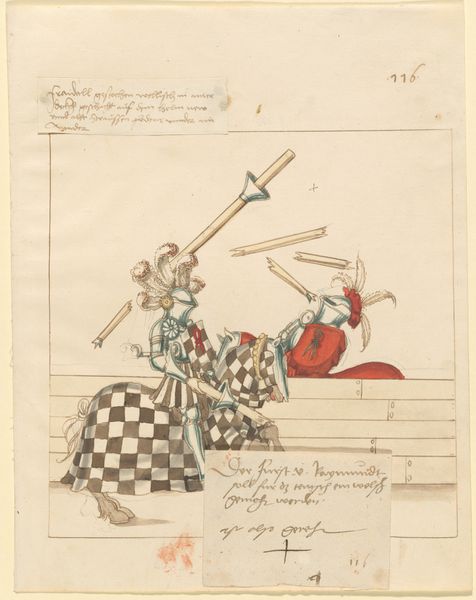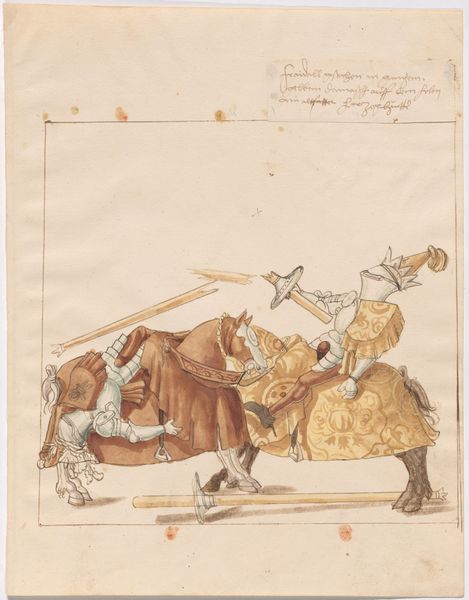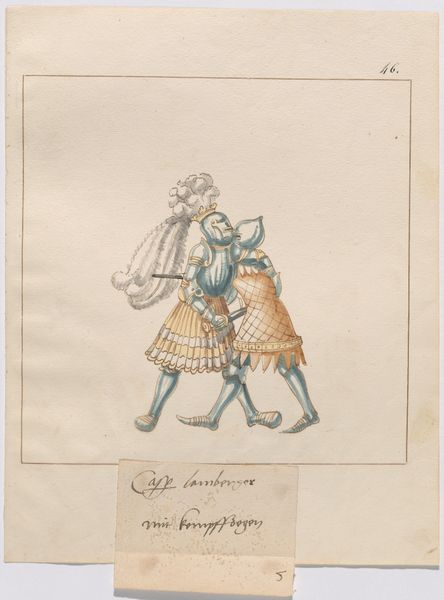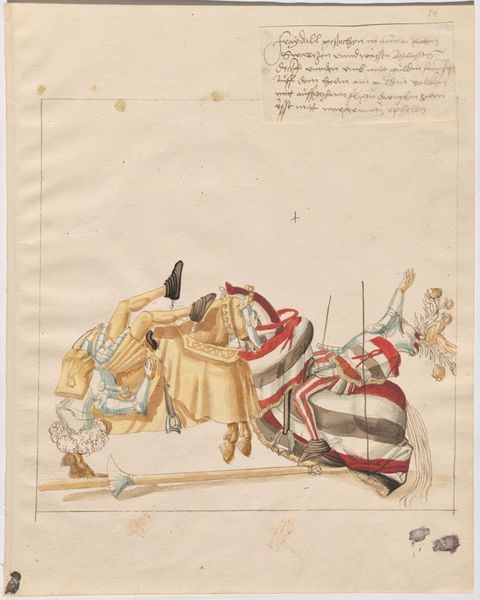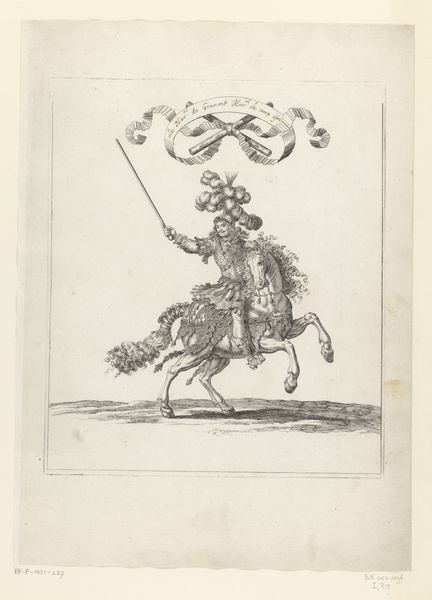
drawing, coloured-pencil
#
drawing
#
coloured-pencil
#
landscape
#
figuration
#
coloured pencil
#
history-painting
#
italian-renaissance
#
miniature
Dimensions: sheet: 33.8 × 26.2 cm (13 5/16 × 10 5/16 in.)
Copyright: National Gallery of Art: CC0 1.0
Curator: Anonymous's drawing, "Italian Joust of Peace," believed to be rendered circa 1512 to 1515, immediately evokes a sense of restrained spectacle, wouldn't you agree? Editor: Restrained indeed. My first thought is of performative dominance meticulously staged amid widespread social inequality and the constant threat of armed conflict in Renaissance Italy. The seeming neutrality in this kind of subject position often benefits the ruling class by diverting public discourse. Curator: Perhaps, but consider the linear precision, the delicately applied color pencil technique—notice how the artist renders the textures of metal and fabric with an almost miniature-like care. Look closely at the horse, a harmonious configuration of anatomical volume, rhythm and dynamic energy contained within the drawn, framing square. It adheres to specific proportional ideals. Editor: And those ideals, let's not forget, served specific patrons and ideologies. This joust isn't simply a depiction of sport; it's a political pantomime. Who gets to participate, who is excluded, what are the implications of the symbolic language being deployed? Even the notion of "peace" must be interrogated within the framework of power relations at the time. The colored pencil makes it appear less dangerous than the subject matter might convey. Curator: I see your point. Nevertheless, appreciate how the composition directs our gaze from the detail of the equestrian figure, positioned in mid-ground, toward a secondary obscured combatant whose implied existence establishes spatial and temporal organization that can stand in as synecdoche for narrative. Editor: Which returns us to a discussion about its purpose. Is it glorifying military prowess, negotiating treaties, or signaling dynastic ambition? I can see a joust's "visual vocabulary" speaking volumes about the complex political theater of the Italian Renaissance, particularly how ruling classes would weaponize spectacles for influence. Curator: And you highlight the drawing’s engagement with contemporary socio-political matters in a way that provides it with a layered and multifaceted reading that invites closer attention to its many components, from the feathered headdress down to the feet. Editor: Absolutely, recognizing these historical contexts enriches our encounter with the artwork immeasurably.
Comments
No comments
Be the first to comment and join the conversation on the ultimate creative platform.
